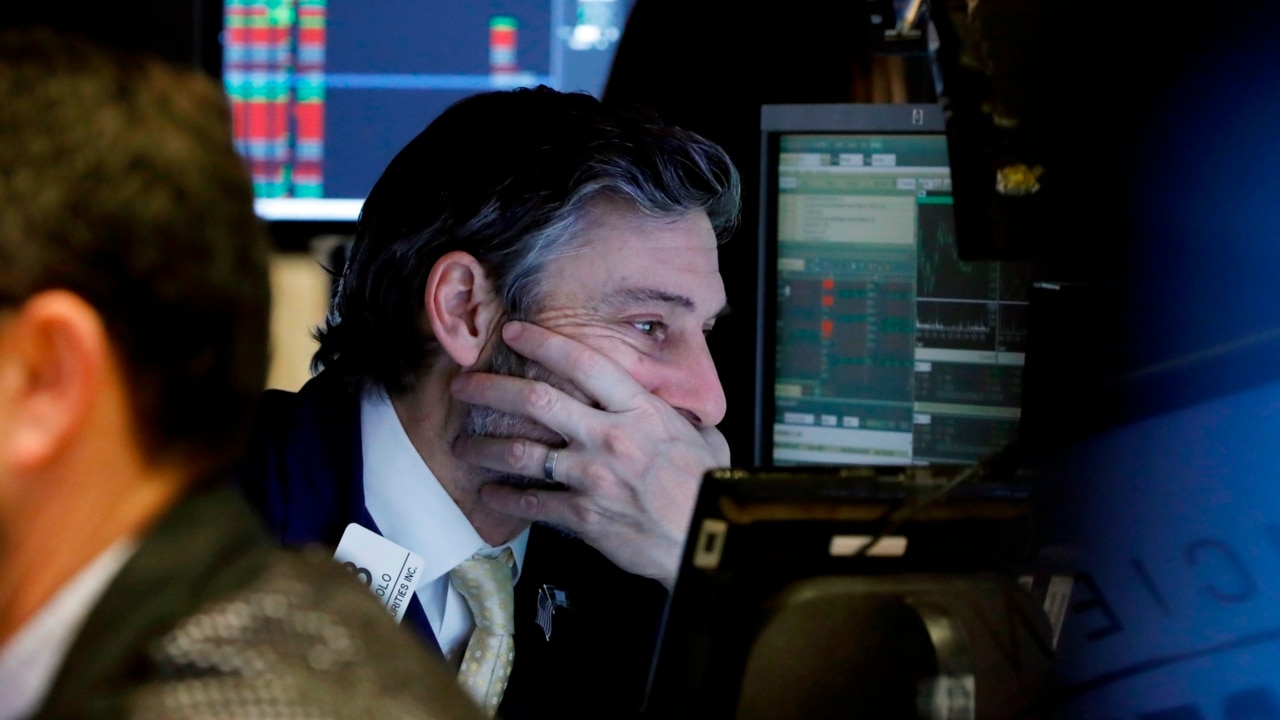Shares, super, property values lost ground in 2018, hitting investors hard
The report card is in: after a rough run home in the final months of 2018, many investors are nursing heavy losses. Here’s how the numbers stack up for property, shares, cash and superannuation.

Business
Don't miss out on the headlines from Business. Followed categories will be added to My News.
At home, it was a year of reckoning for the big banks as their dirty laundry was hung out for all to see at the financial services royal commission.
Abroad, it was the year US President Donald Trump dragged his nation into a bitter trade stoush with its biggest trading partner, China.
SHARES LOOKING MORE POSITIVE BUT BEWARE OF ONGOING VOLATILITY
CHINESE INVESTMENT IN AUSTRALIA DOWN, BUT VICTORIA STILL NO. 1
And as the fallout from both developments — and the ousting of yet another Australian prime minister — washed across the markets, investors paid a heavy price.
Those with cash in the bank enjoyed a rare year in the winner’s lane, eking out narrow gains.
But share prices reversed, as did property prices, and superannuation funds struggled to stay in the black as the stockmarket woes took a toll.
Here’s how your assets fared.
PROPERTY
Residential property prices took a hit this year in most markets, with the average price for houses and flats falling 4.8 per cent nationally.
According to research house CoreLogic, prices have broadly fallen 5.2 per cent since peaking in October 2017 — the biggest such fall since the global financial crisis a decade ago.
Prices started to decline gently but the slide gathered pace as the year progressed, particularly in Melbourne and Sydney.
CoreLogic research analyst Cameron Kusher said Sydney recorded the largest fall, down 8.9 per cent — its steepest full-year slump for almost 35 years.
Melbourne prices were down 7 per cent.
Unlike previous real estate declines, typically caused by unfavourable economic conditions or higher borrowing costs, this year’s fall has been caused by a contraction in lending.

“This slowdown has been manufactured via tighter credit conditions while the economy continues to grow and mortgage rates sit at near record low levels,” Mr Kusher said.
He said that for the first time since financial deregulation in the mid 1980s, access to credit had become more difficult.
On preliminary figures, the suburb with the highest median price for houses that changed hands during the year was Sydney’s Bellevue Hill at $4.6 million, followed by Vaucluse at $4 million.
Melbourne’s Toorak came in third at $3.8 million.
The lowest median house price was in Zeehan in Tasmania’s west, at $71,200, followed by Peterborough in regional South Australia at $71,900.
For landlords, the highest rental yields came from Western Australia, with units in Port Hedland offering 16 per cent.
SHARES
Share markets fell heavily across the globe in the second half of the year, creating a headache for those heavily invested in stocks.
The Australian bourse finished the year as one of the better performers — albeit in a bad bunch — and narrowly behind the US market.
Ending December at about 5600 points, the benchmark ASX 200 index was down 6.9 per cent across the year.
That compares with a 5.6 per cent fall in the Dow Jones Industrial Average.
The red ink ran far deeper in key European and Asian markets, which all sustained double-digit slides over the year.
“Up to August the ASX 200 was at a 10-year high, but since then it was hit with a combination of global worries overlayed with local issues,” AMP Capital chief economist Shane Oliver said.
Across the companies that make up the benchmark index, all but two sectors finished in the red.

The health sector — a traditional defensive investment — was the standout performer, up 17.3 per cent, and the IT sector also had a solid year chalking up a 5.5 per cent gain.
Among the big losers was the communications sector which was down 21.4 per cent as a lacklustre year for Telstra had an impact.
Financial services finished the year down 14.8 per cent as the royal commission hearings played out.
The energy sector also fared poorly, shedding 10.8 per cent, while consumer discretionary stocks dropped 10.7 per cent.
Dr Oliver said global trade tensions and the prospect of more interest rate rises in the US were among issues that had weighed on the market.
“We can expect another similar combination of factors but to a lesser degree,” he said.
“This will again be overlayed with local issues — housing prices and wages growth — which will impact on consumer spending.”
SUPERANNUATION
The final report card for super funds is yet to be released, but the average balanced-option fund was sitting on a narrow loss in December as share prices fell.
Most analysts expect the typical fund to have lost 1 per cent for the year.
That would mark the first negative return for balanced funds in almost seven years.
Typically, shares make up about half of the investments by value in balanced fund investments.
That means falls in share prices can exact a heavy toll on super funds.
However, such falls last year have been offset by improvements in values of other assets including infrastructure, commercial property, private-equity investments and cash.
SuperRatings executive director Kirby Rappell late last year expected most funds could end the year down 1.5 per cent.
“Although it will be a struggle right to the end, we expect balanced funds to nudge 1.5 per cent down for the year,” Mr Rappell said.
“A weaker Australian dollar has helped offset some of the worst international falls but has not been able to stem the losses overall.

Returns from super since the GFC have been incredibly strong, however, and we think a lower-return environment is here to stay for at least the next year.”
Super research company Chant West expected the typical loss to clock in at 0.5 per cent.
“However, it is no sure thing and we may yet see the it worsen,” research manager Mano Mohankumar said.
“Whatever happens, this year’s return will be nowhere near the 10 per cent average of the previous six years.
“Asset managers have been saying for some time that most sectors are now priced at the top of their valuations or close to it.”
CASH
Savers have had a small win this year with a slight rise in the average interest rate paid on a $50,000 term deposit.
Financial services broker Finder said the average 12-month term deposit rate in January last year was 2.29 per cent. This had increased to 2.39 per cent by last month.
However, the increase would have done little for people relying on savings for income, or to fast-track goals such as building a home deposit, Finder spokeswoman Bessie Hassan said.
The increase in the average rate on a $50,000 term deposit would add up to an extra $50 over the year, delivering total interest of $1195.
Ms Hassan said the highest rate on the products tracked by Finder was 2.8 per cent. For a $50,000 deposit, that would have added an extra $255 compared with the average at the start of the year, delivering $1400 interest in total.
It was mixed news for borrowers, with a small reduction in the average interest rate charged on owner-occupier home loans but a small increase in the average charged on credit card debt. Banks also broadly hit investment home-loan customers with rate rises.

The average owner-occupier home loan started the year at 5.09 per cent and ended it at 5.05 per cent.
“Average home-loan rates continue to inch down as the cash rate remains historically low,” Ms Hassan said.
“Despite the average rate appearing as 5.05 per cent, in this market you really should have a mortgage with a three in front of it.” By contrast average credit card rates have increased 0.03 from 17.09 per cent to 17.12 per cent.
“We encourage people to pay off their credit cards in full each month,” Ms Hassan said.
“If you do need to carry a balance, it’s worth looking for a card with a low purchase interest rate. Otherwise you could move your debt to a card with zero interest on balance transfers and pay it off during the promotional period.”
The Reserve Bank official cash rate was unchanged in 2018 at 1.5 per cent.


